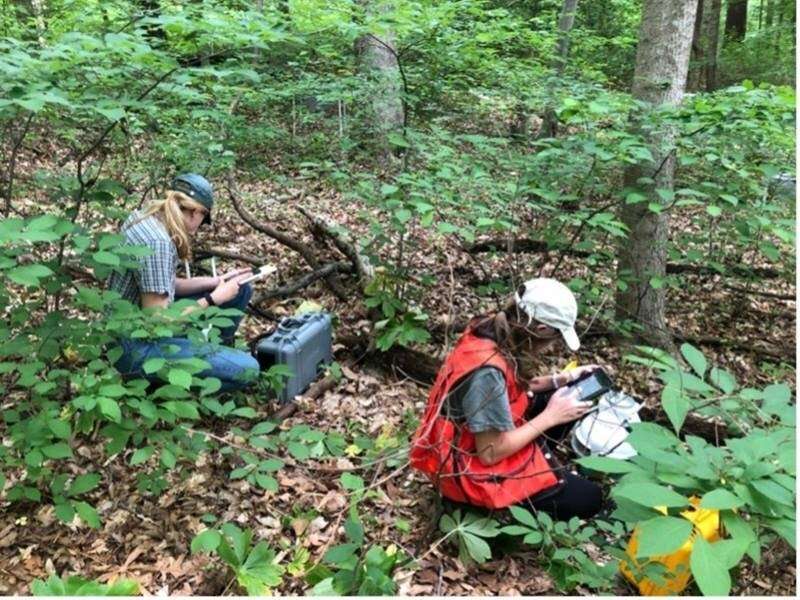This article has been reviewed according to Science X's editorial process and policies. Editors have highlighted the following attributes while ensuring the content's credibility:
fact-checked
trusted source
proofread
The legacy of past disturbance shapes coastal forest soil stability

Coastal forests are increasingly exposed to the effects of climate change and sea level rise. However, scientists have an incomplete understanding of what this means for soil stability. An experiment has examined how soil might change when transplanted between parts of a tidal creek that differ in salinity.
Scientists found that soils with a history of salinity and inundation by seawater were more resistant to changes in water properties and movement. This suggests that the soils had already "learned" how to adapt to environmental changes.
The researchers suggest that differences in the resilience of soils' carbon cycling vary across landscapes. This variation is likely due to the soils' composition, chemistry, other characteristics, and the legacy of prior exposure to disturbance. The team's research is published in the journal Soil Biology and Biochemistry.
Coastal change research has traditionally focused on environments closest to the ocean, such as barrier islands, intertidal wetlands, and subtidal ecosystems. These studies have yielded conflicting results. Consequently, researchers know little about the sensitivity of coastal forest soil carbon to future changes in climate conditions.
The results of this study suggest that disturbance legacies shape coastal forest soil responses to changing salinity and inundation from rising sea levels and storms. In the context of ongoing climate change, this type of manipulative transplant experiment provides a crucial inferential link between purely observational experiments, data synthesis efforts, and large-scale ecosystem manipulations.
The researchers used a natural salinity gradient in a tidal creek in eastern Maryland to examine how soil respiration and chemistry might change under novel salinity and inundation disturbance regimes. The team included Pacific Northwest National Laboratory, the lab's Joint Global Change Research Institute, and the Smithsonian Environmental Research Center.
Researchers transplanted soil monoliths among plots varying in seawater exposure and elevation above the creek and monitored the soils for two years. The response of soil respiration—the flow of carbon dioxide from the soil to the atmosphere—was dependent upon the salinity and inundation legacies associated with each study location. Respiration did not change (i.e., high resistance) under new moisture conditions in lowland soils with a history of seawater exposure.
Conversely, respiration decreased (i.e., low resistance) in upland soils that had little past exposure to seawater, or inundation decreased (i.e., low resistance) and remained suppressed (i.e., low resilience) when those soils were exposed to wetter, saline conditions. Additionally, transplantation resulted in greater changes to upland soil chemistry relative to that observed in lowland soils.
Together, these results suggest that disturbance legacies shape coastal forest soil responses to changing salinity and inundation disturbance regimes. However, fully understanding the dependence of system responses on disturbance legacies requires future study across a variety of systems and spatial and temporal scales.
More information: A.M. Hopple et al, Disturbance legacies regulate coastal forest soil stability to changing salinity and inundation: A soil transplant experiment, Soil Biology and Biochemistry (2022). DOI: 10.1016/j.soilbio.2022.108675
Provided by US Department of Energy




















